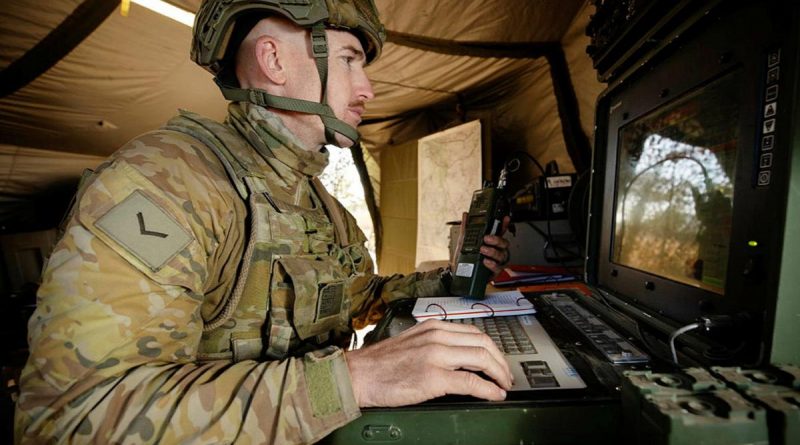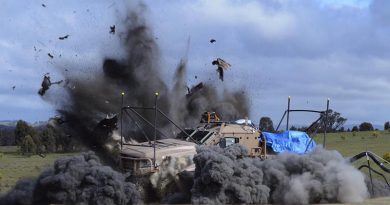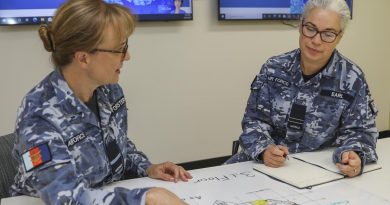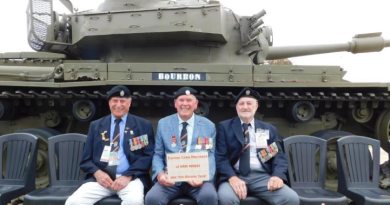Flying drones a specialist skill

You would be wrong to think unmanned aerial vehicle (UAV) operators are professional video gamers.
CAPTION: Unmanned aerial vehicle captain Lance Bombardier Lewis Day operates a Shadow 200 from a ground control station during Exercise Dragon Sprint at the Townsville Field Training Area. Story and photo by Petty Officer Lee-Anne Cooper.
With UAVs subject to the real-world combination of physics, weather and light, when it’s flying at 15,000 feet, the operator has to know what they can and cannot do.
Shadow 200 operator Gunner Steven Pisani said flying a military UAV required constant concentration.
“Inside the box, you are in control of a live UAV and things can go wrong; you have to be alert the whole time,” Gunner Pisani said.
“There is a lot to know. There are always publications and restrictions coming out and there is a lot of doctrine and a lot of rules.”
For the first time since 2017, the 131st Battery designated targets for missiles and bombs using laser during exercise Dragon Sprint at the Townsville Field Training area.
Aircraft captain Lance Bombardier Lewis Day said the exercise allowed the operators to clock up hours on a live system.
“This has meant flying at different altitudes and in support of different call-signs for extended periods of time, day and night,” Lance Bombardier Day said.
The battery worked in a forward position away from airfields, where operators worked shifts and created a defensive position with weapons and radio pickets.
Working within a forward ground control station, operators considered weather, fuel, transit and airspace while providing target locations for the artillery and helicopters.
Inside, the left-side operator controls the UAV while on the right, the payload operator controls the camera and laser.
They received orders from a dislocated mission commander who provided a grid square to monitor.
The exercise provided a unique opportunity for laser designation, as UAVs do not routinely operate with the laser connected for laser safety reasons.
“We sought out a target and the laser gave us a high-confidence grid that was passed onto the guns and ARH (helicopter),” Gunner Pisani said.
“There are simulators back at the unit and it is easy to fly in a simulator and click buttons and just make things happen, but it’s the stuff you cannot plan for that provides real training value.
“Instead of just sitting on a flightline and just doing technical flying, this is more about a tactical posture and tactical flying set-up.
“I enjoy flying. It is intense at times, and there is a lot of hours just staring at a screen looking for something.”
The Shadow 200 system has deployed multiple times since entering service in 2011, and as recently as 2020 on Operation Resolute.
“I have been fortunate to deploy on multiple missions in the past where we have been able to help troops on the ground,” Gunner Pisani said.
“There are a lot of things we can do, and this exercise is a perfect example.”
.
.

.
.





